Today, Magic: the Gathering artist Sam Burley and former Magic Designer and Rules Manager Eli Shiffrin launched Herobane, a brand new board game via Kickstarter. The game is designed and produced by Scale Bird Games, a joint venture of the two creatives.
Herobane is a high risk dungeon-building strategy game of dice and cards. Choose your avatar of evil, and defend your dungeon from heroes with heinous minions and rooms. Fair fights are for the “good guys,” so be sure to stack the odds of combat in your favor. Slay foolish invaders to build your dungeon’s reputation, and be the first to take on enough epic heroes to claim victory and the title of Herobane.
To give you all a look behind the curtain of this brand new game, I sat down with Sam Burley to talk about everything that went into what he and Shiffrin have createdI
Interview with Sam Burley
Donny Caltrider: Hi Sam! I know you’re really excited about this, so let’s get right into it. Tell me about Herobane!
Sam Burley: Hey Donny! I’m so excited to announce our Herobane Kickstarter and talk to you about the creative for it!
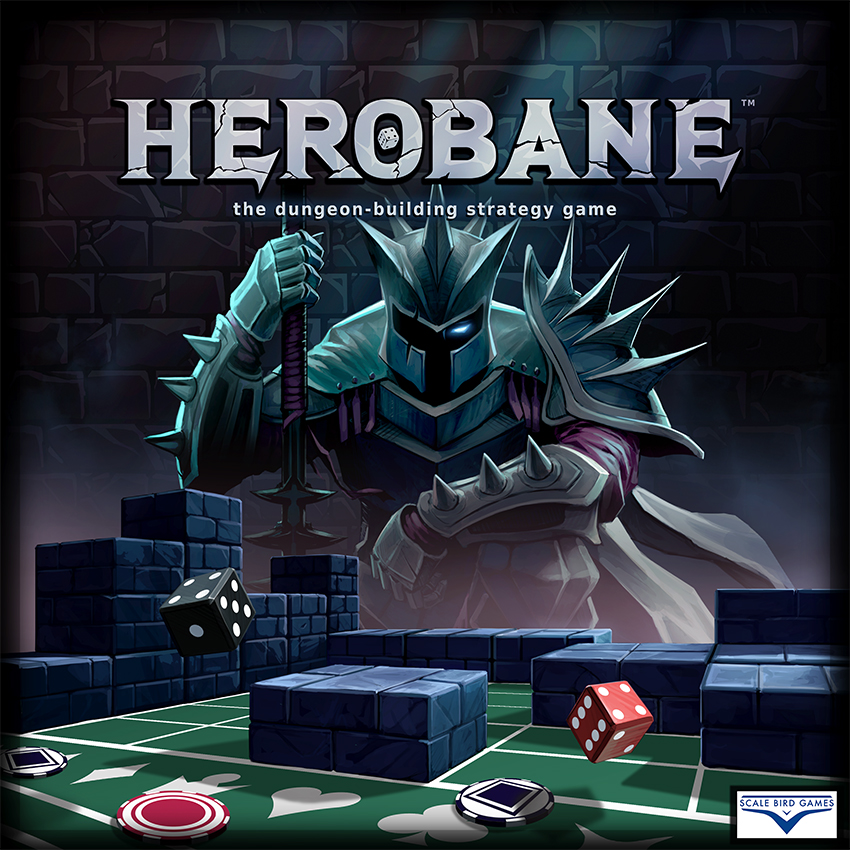
What is Herobane exactly? It’s a dungeon-building strategy board game where you are not the good guy. You get to be the villain, and that begins with the very first game decision: selecting your avatar of evil. From there you’ll attempt to build the most nefarious dungeon chock full of dastardly minions and treacherous schemes with the intent of grinding up heroes better and faster than your rivals to achieve victory.
Whoa! That’s pretty wild. Tell me more about these Avatars of Evil!
There are up to six avatars (depending on stretch goal success) to choose from at the beginning of a game. Each offers different play styles and strategies with two unique abilities per avatar. There’s a broad range of characters to play as, like the melancholy maze minotaur that gets to start with an improved dungeon board, the narcissistic cult-leading mage that empowers their magical followers, and the giant spider that can alter the game’s tempo by webbing up heroes for later.
![]()
Choosing an avatar adds so much replay value, because once you have a sense of the rules, you can really feel the gears turning about who to play as next time, or which might best support a particular strategy you’d like to try.
We even have a personality quiz available that will tell you which avatar of evil you align most with! (And if you share the results on social media, it’s a super helpful way of supporting the Kickstarter for free.)
So once you’ve chose your Avatar of Evil, now what? How does game play work?
Herobane is a PvE (Player vs. Environment) race to victory with chances to disrupt opponents’ plans along the way. If you enjoy tabletop games like Settlers of Catan, Dominion, or Cosmic Encounters, then this is right up your alley! Players draw from one of the game’s two shared decks, the Dungeon deck, which contains Minion, Gambit, and Room cards. Minions use dice to attack heroes, Gambits feature a mix of tide-turning strategic effects, and Rooms upgrade your dungeon so it generates resources faster. The other shared deck, the Hero deck, contains heroes and epic heroes that provide various rewards and sometimes victory points when defeated.
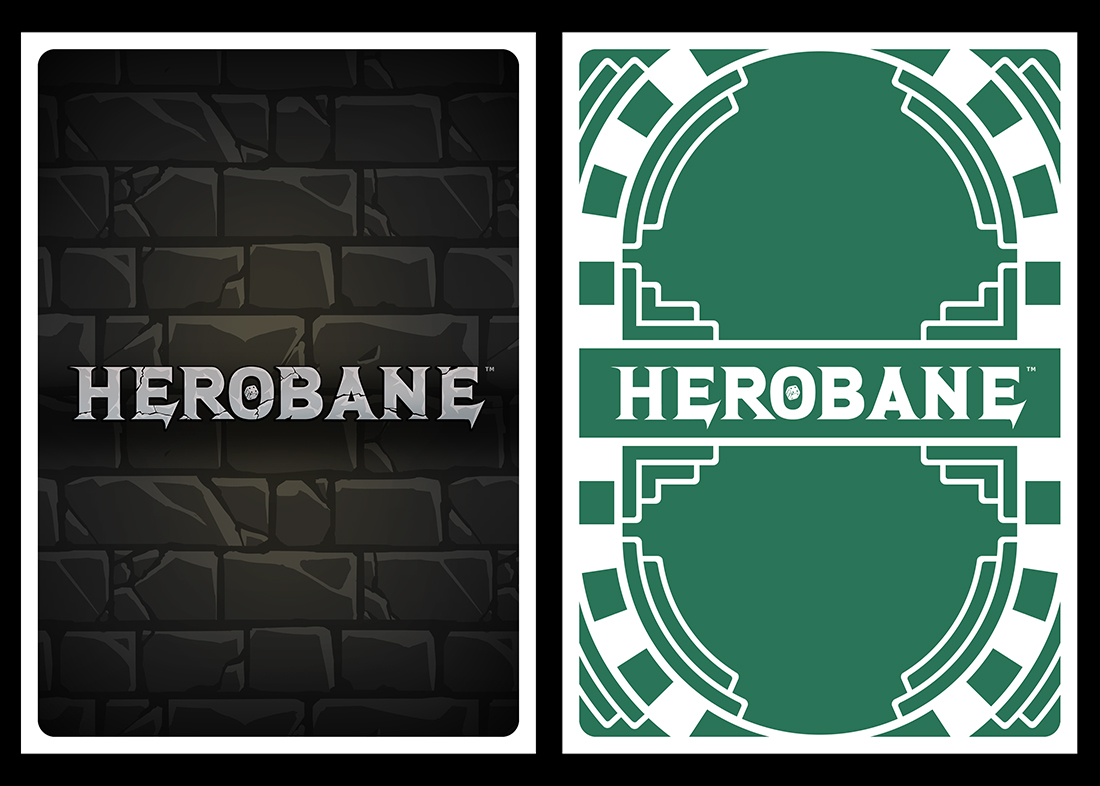
Ah, so there are Heroes too. Can you tell us about them?
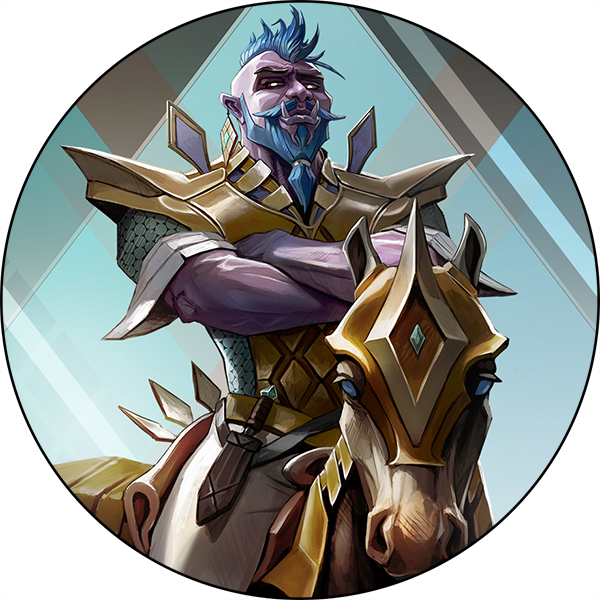
Everyone knows the hero is always fated to win out against evil—that’s how every story is supposed to go, right? The “good guys” certainly think so and steep themselves in casino motifs, fully embracing the same inevitability of the phrase “the house always wins.” Thus you’ll find playing-card-inspired characters at your dungeon’s doorstep like the Knight of Coins (above) and Emissary of Clubs (below) in card frames designed with a nod toward gambling tables and roulette wheels.
The heroes all hail from different suits, essentially seven different medieval courts, where the most powerful heroes are represented by face card royalty like kings and queens. Unfortunately for the heroes, though, nobody’s told them villains don’t play fair here, and it’s your job to cheat their destinies and the random odds alike by rerolling dice, dealing damage directly, and much more.
I am really digging the art style on these heroes. Where did the inspiration come from?
Herobane features a mix of classic fantasy favorites like elves and dragons, alongside villainy tropes to create something fun, fresh, and worthy of mustache-twirling. The art style as a whole falls somewhere between comics and playing cards, trying to take the best of both worlds with strong silhouettes, expressive poses, heavy linework, and graphic elements.
I love it. And it’s a bit different than what we’ve seen from you in the past, right?
For me personally the art has been a fun exploration and huge learning experience that’s already begun to influence my work elsewhere. By the time of the game’s release, I will have done at least half the game’s 90+ pieces of art! I don’t often get to work on characters (or graphic design), and having to do so much for Herobane has been both refreshing and challenging! Being the creative lead and artist simultaneously does have its benefits though. It means I can be thinking about naming, themes, and creative balance across the whole set, all while working on one piece of art and make multiple decisions on the fly that all inform each other. Mercenaries (like the Copperhead Lackey) feature a snake motif (as in snake eyes), and while I’m working on it I can start thinking about which other minions would be best at carrying that theme and how to approach them.
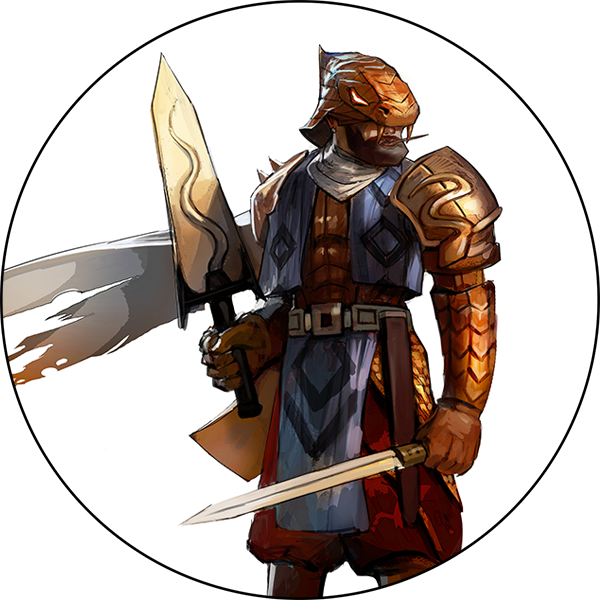
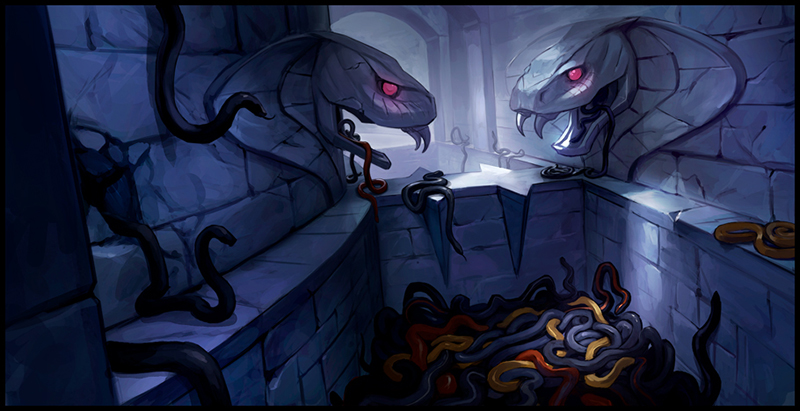
Of course it’s not all character art, and if you’re a fan of environments like the stuff I’m typically known for, there’s plenty of that here too. Herobane is all about building up your dungeon and strengthening it with room cards that bring your lair to life in vivid detail. Cover it in Snake Pits, or lay traps with powerful cards like the Precarious Lava Bridge! Physically building your dungeon is one of the most fun and novel aspects of the game.
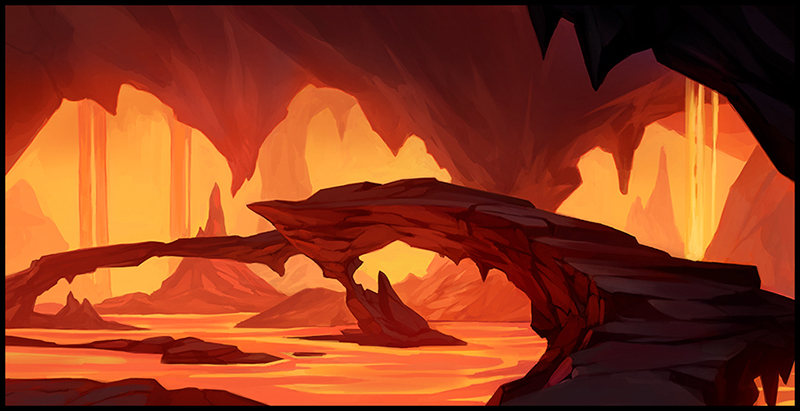
These landscapes are so vivid; I can’t wait to see the rest of them! Oh, and before we forget—can I show them now?
Of course! Be careful though, she’s pretty tough…
Preview Card
That’s right folks, I’ve also got an exclusive free preview card to share with you all, and she is the Orcish Twinfang!
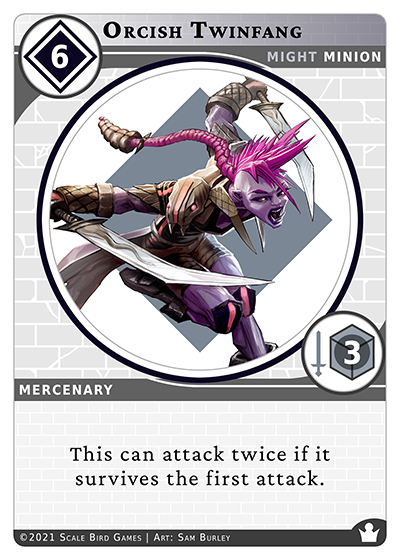
This mercenary minion is an incredibly strong addition to your dungeon. As a rule Minions can only attack once, but the Orcish Twinfang is the only card that has the ability to attack twice, and will combo very well with lots of other cards you’ll see soon.
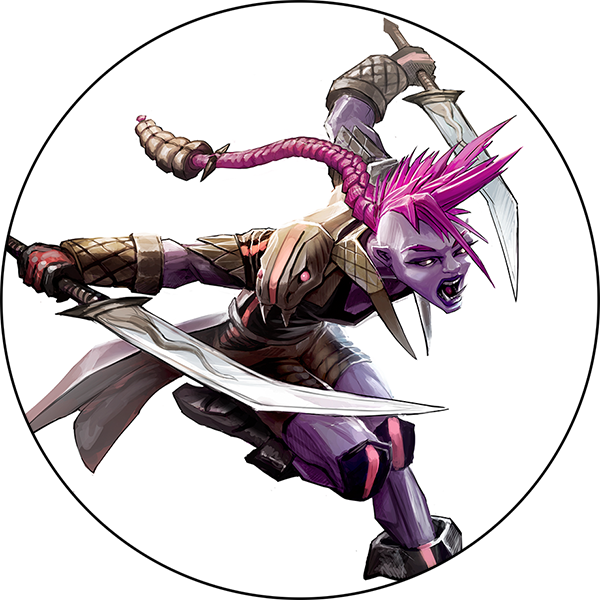
Sam gave me some insight into the Orcs of Herobane and how they were created: purple skin, spiky hair, and those extended canine teeth set them apart from the other classes. These orcs mean business, but not in a rock throwing, club smashing kind of way. Burley said he was aiming for “a bit more finesse, class, and appeal” The end result is a bad-ass, half rogue, half cyberpunk design that I think folks will really love. She’s for hire, and coming to a dungeon near you.
Wrapping Up
The Herobane Kickstarter campaign runs for 30 days from today. You can grab yourself a First Edition copy, and don’t forget to mention their retail package to your LGS so they can get in on the action too.
Also be sure to take the Herobane Quiz Sam mentioned earlier to see which Avatar of Evil fits you best, and share your results on social media. It says I’m the Dragon Tyrant, which does seem rather fitting, so I guess I know who I’ll be playing as first!
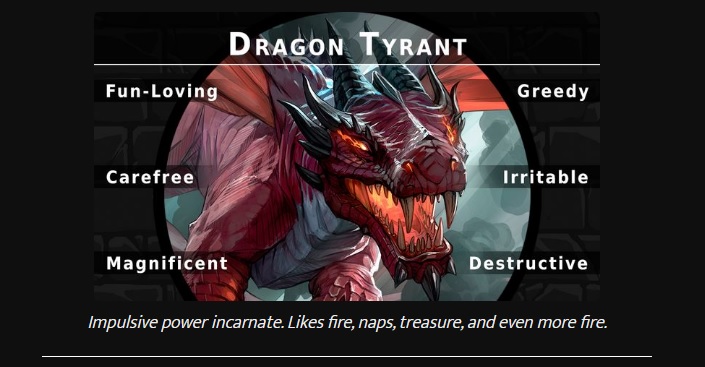
If you have any questions regarding the Kickstarter campaign, you can reach Sam and Eli at info@scalebirdgames.com. Head on over and make your pledge now to become a backer. Heroes beware!
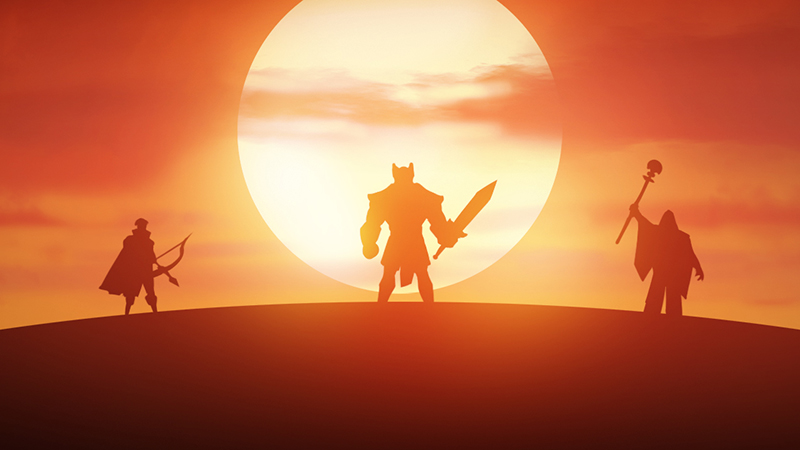
About the Creators
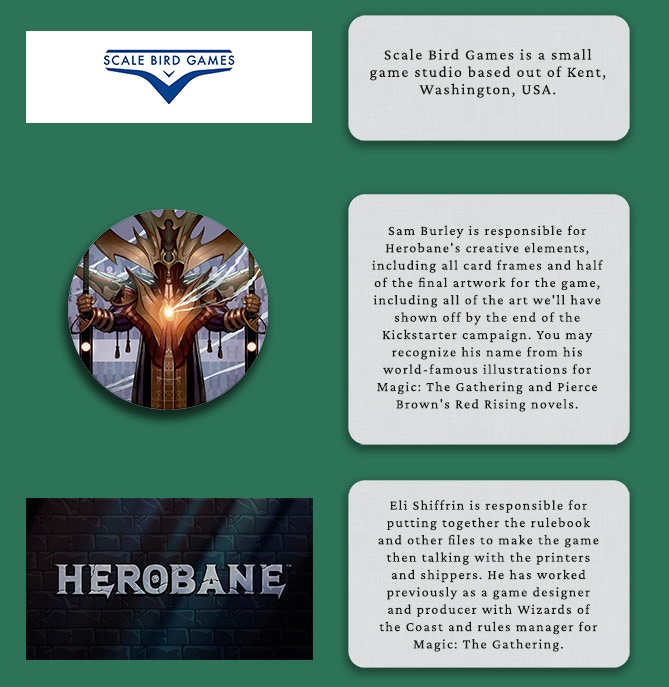
Scale Bird Games is a small game studio based out of Kent, Washington, USA.
Sam Burley is responsible for Herobane’s creative elements, including all card frames and half of the final artwork for the game, including all of the art we’ll have shown off by the end of the Kickstarter campaign. You may recognize his name from his world-famous illustrations for Magic: the Gathering and Pierce Brown’s Red Rising novels.
Eli Shiffrin is responsible for putting together the rulebook and other files to make the game, then talking with the printers and shippers. He has worked previously as a game designer and producer with Wizards of the Coast and rules manager for Magic: the Gathering.

